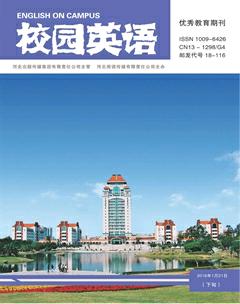Analysis on Public Signs from the Perspective of Language Economics
Ma Yue
【Abstract】For a long time, public signs have been the focus of many researchers and scholars. They probe into this kind of meaningful and special language from different perspectives by adopting theories from a large scale of areas. However, the researches were mostly limited in several hot fields, like linguistics, translation, culture or travelling. Nevertheless, in the year of 1965, Jacob Marschak(1965), an economic professor in the University of Los Angeles presented a theory, which turned the researchers eyes to a brand new region, which is language economics. In the following paper, the author will combine the theory of cost and benefit with public signs. Two types of public signs will be particularly analysed using the theory of cost and benefit that belongs to language economics.
【Key words】linguistics; language economics; public signs
1. Analysis
1.1 Directive Public Signs
The main function of this kind of public signs is providing information or presenting service contents. Their contents are about particular sites or names of certain orgnizaitons. When translated, nouns are largely adopted.
Examples A:
a. Ticket & Travel Centre
票務(wù)與旅游中心
b. Underground
地鐵
c. Information
問(wèn)詢服務(wù)
d. Way Out
出口(通道)
These directive public signs are collected from public places. It is not hard to find them. They offer necessary information to people, mainly presenting important directions, thus bringing huge convenience to daily life.
These examples of public signs possess a common characteristic, namely, all the parts of speech are nouns. With only one or two words making points clearly, it saves space, material and labour, investing a rather small amount to achieve the function of direction. Especially the last example, it even has connotative meanings, with only two words expressing the meaning of a whole sentence. The last example means “Dear pedestrians, please make a detour.” The reader can get the message quickly and clearly, so the function of the public signs is well achieved, which is beneficial. Small cost, huge benefit.
Some other directive public signs may be even more economical than nouns, with only some big letters posted there.
Examples B:
a. P停車(chē)場(chǎng)
b. YMCA基督教青年會(huì)
c. Berwick RD伯爾威克大街
d. I旅游咨詢
These public signs are more typical than those in example A. They are abbreviations, much shorter and simpler than nouns. They cost less space, less material and less labour. Whats more, less cost doesnt mean less effect. This form may be more conspicuous and convenient for people to get messages immediately, achieving the aim of direction efficiently.
1.2 Restrictive Public Signs
This kind of public signs is used to restrict certain behavior of the public. Despite its straightforward and clear expression, a tone of politeness remains.
Examples:
a. Construction Site Keep Out.
施工現(xiàn)場(chǎng) 禁止入內(nèi)
b. Dogs must be carried.
抱好犬只
c. Keep clear of the edges.
勿靠?jī)蓚?cè)(電動(dòng)扶梯)
d. Please do not part here.
請(qǐng)勿在此停車(chē)
We can see that the biggest characteristic of these public signs is their syntactical structure. All of them are imperative sentences. The feature of imperative sentences is that they are straightforward and brief as well as serious-toned. The cost is not much due to the simple sentence pattern of imperative sentences. But the benefit it gains is considerable. By using imperative sentence, the public can receive the message particularly in no time and they also view the message as a compulsory duty to take on owing to the strict tone. Small cost, huge benefit.
2. Conclusion
The situation of public signs study in china is both positive and negtive. Though there exists a long history of the study of public signs overseas, which is getting maturer and more regulatory, but in China, the study of public signs began much later and was much less in number. As a result, until now the study of public signs is still a new area. However, in recent years, as the openness of China increases, the importance of public signs rises. More and more scholars begin to concentrate on this language phenomenon. To make a summary, this paper, as a brick that has been thrown out, encourages more pieces of jade. The author is expecting a more systematical and logical theory framework and wholesome corpus.
References:
[1]Marschak,Jacob.Economics of Language[J].Behavioral Science,1965,(10).
[2]GRIN,F.The economics of language:Match or mismatch?[J].International Journal of PoliticalScience Review,1994,(15):27- 44.
——以基督教青年會(huì)檔案為依托

